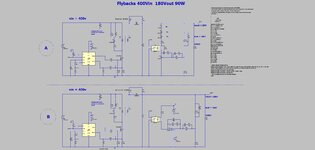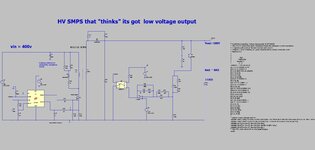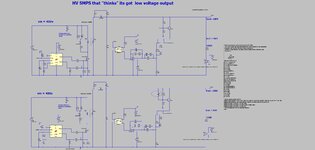cupoftea
Advanced Member level 5
Hi,
When we do SMPS with high voltage output, like 180Vdc, then its more difficult to avoid ending up with a very unfortunately low feedback loop bandwidth….
Therefore, for eg an opto-isolated SMPS as attached, its very important to do the feedback loop like in Circuit “B” of the attached. Circuit “A” has two paths from Vout to the error amplifier, and these paths 'fight' against each other……and in solving this you end up with an unfortunately lower feedback loop bandwidth.
(LTspice simulation and jpeg schem as attached, shoudl you wish)
So do you agree, Circuit “B” is better?
(Also attached is the LTspice Sym and Sub files for the TL431...should you wish for them)
When we do SMPS with high voltage output, like 180Vdc, then its more difficult to avoid ending up with a very unfortunately low feedback loop bandwidth….
Therefore, for eg an opto-isolated SMPS as attached, its very important to do the feedback loop like in Circuit “B” of the attached. Circuit “A” has two paths from Vout to the error amplifier, and these paths 'fight' against each other……and in solving this you end up with an unfortunately lower feedback loop bandwidth.
(LTspice simulation and jpeg schem as attached, shoudl you wish)
So do you agree, Circuit “B” is better?
(Also attached is the LTspice Sym and Sub files for the TL431...should you wish for them)



